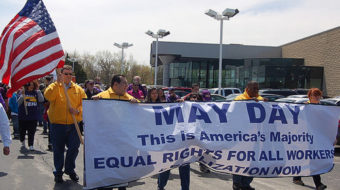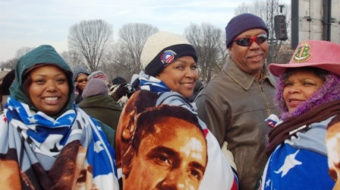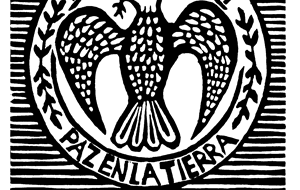Honduran President Manuel Zelaya has announced he will return to his country this weekend, accompanied by a distinguished group of Latin American and International figures including Organization of American States Secretary General José Miguel Insulza and the presidents of Argentina and Ecuador. He had originally planned to return on Thursday July 2, but postponed his arrival to allow for an ultimatum the OAS have given to the acting president of Honduras to expire. Although the illegal regime set up by the people who carried out the coup have threatened to arrest Zelaya if he returns, my guess is that the coup is done for, and that Zelaya’s return will be a march of triumph.
How did the events in Honduras, one of the smallest and poorest countries in Latin America, suddenly acquire what Marx would have called “world historical” importance? This was not the first military coup d’etat to occur in the region, after all, or in Honduras itself.
The Honduran drama has become the stage on which a momentous conflict is being acted out in miniature, a conflict that has hemispheric and worldwide implications. The stupid move by the Honduran military to revert to an old fashioned barracks coup d’etat has made everything come to a head in Honduras.
The Washington Consensus
Since the collapse of Soviet and Eastern European socialism 18 years ago, Latin America and the Caribbean, like other poor Third World regions, has been subjected to ferociously exploitative economic policies that can be subsumed under the titles of “Washington Consensus” or “the neo-liberal package”.
The Washington Consensus promotes development through free trade and foreign investment. The “free trade” part is a scam as the trade is not free, but rigged in favor of the wealthier countries and international monopoly capital. NAFTA, set up between Mexico, the United States and Canada, is an example, as DR-CAFTA, set up between the United States and the Central American countries plus the Dominican Republic, is another.
This model requires the following from participating poor countries:
That they open up their economies to penetration by foreign multilateral corporations, changing their laws and even their constitutions to get rid of not only trade protectionism, but also labor and indigenous rights, environmental protection, tax laws and other measures that might be deemed to be prejudicial to the interests of foreign investors.
*That they privatize their economies in order to permit foreign and domestic capitalists to realize profits from every aspect of the nation’s economic functioning, including the health care and educational systems, public transportation, water for drinking and irrigation, and many other things.
*That they carry out a program of austerity to cut the government’s payroll, this being a special requirement if a country wants help from the International Monetary Fund and the World Bank.
There have been rebellions against this neo-liberal package since January 1, 1994, when NAFTA came into force and indigenous farmers in Chiapas, Mexico, arose in arms specifically to fight against it. DR-CAFTA has led to major protests in all countries involved. There are currently big disturbances over the US-Peru Free Trade Agreement. The big project of the Bush administration, the Free Trade Area of the Americas (FTAA) has evidently only succeeded in creating unity among forces in several countries of the area which oppose it.
Resistance to Neo-Liberal Policies Grows
Cuba alone has toughed out this whole period of neo-liberalism, a tribute to the brilliant historic leadership of the Cuban Revolution, the fighting qualities of the Cuban people, and the agility of the Cuban model of socialism in adapting itself to all kinds of internal and external challenges.
But while Cuba was toughing it out in conditions of great difficulty and hardship, the “old mole” of class struggle in the rest of the hemisphere was digging away. In country after country, the cause of the working class and the masses was reviving strength and moving toward a series of breakthroughs.
First, the election of Hugo Chavez as president of oil-rich Venezuela in 1998 created a situation in which a larger, potentially wealthy country could begin to link up both with Cuba and with the people’s movements hemisphere-wide to start developing an alternative to the neo-liberal, Washington Consensus model. That nations could develop their resources, trade and industry without impoverishing their workers and poor farmers, and in fact with their active and enthusiastic participation, became an idea which riveted the attention of people in every Western emisphere country, and beyond.
In quick succession, more or less left-leaning governments then began to come to power in one Latin American Country after another. The election of presidents Luiz Inacio Lula da Silva in Brazil (2003), Nestor and then Cristina Kirchner (2003), Tabaré Vazquez in Uruguay (2005), Evo Morales in Bolivia (2005), Michelle Bachelet in Chile (2006) Daniel Ortega in Nicaragua (2006), Rafael Correa in Ecuador (2007), Fernando Lugo in Paraguay (2008), Mauricio Funes in El Salvador (2009), all represent turns to the left in their respective countries.
In fact there are now only three major right-wing regimes in Spanish-speaking America: those of Felipe Calderon in Mexico, Alan Garcia in Peru and Alvaro Uribe in Colombia. And the Peruvian government seems to be on the ropes.
Not all these governments are equally left wing. Chavez of Venezuela, Morales of Bolivia and Correa of Venezuela consider themselves to be full-blown socialists and are implementing very radical policies: nationalizing foreign and domestic industries, radically upgrading labor laws, recognizing the rights of indigenous people and, above all, helping with massive grassroots politicization and mobilization efforts of their peoples, instead of repressing them.
The Kirchners of Argentina, Lula of Brazil, Bachelet of Chile and some of the others are in reality social democrats, not revolutionaries, in their internal policies. Not all of these governments are stably installed, and it is not impossible that there may be major reverses in one or another country, as the midterm elections in Argentina just showed. But they all have the merit of, to a greater or lesser degree, supporting the initiatives of the radicals, and of opposing US efforts to crush the Cuban Revolution.
The Bolivarian Project
What are these initiatives? There are a number of projects afoot to create a horizontal integration of the Latin American and Caribbean economies as a counterpoise to the historic domination of the whole area by US corporations and imperialism, i.e. the “Washington Consensus” itself. This is seen as a realization of the dream of the liberator of South America, Simon Bolivar, whose frustrated comment when he was near death, having failed to achieve the continental unity he saw as essential, was “we have been plowing in the sea”. (Hemos arado en el mar).
Possibly more than 180 years after the liberator’s death, nearly two centuries of coups, military adventurers, senseless fratricidal wars that on occasions nearly decimated entire countries, and seemingly eternal foreign domination, the Bolivarian project is now becoming a reality. This is inspiring action by millions of people throughout the region.
The centerpiece of this Bolivarian project is ALBA – The Bolivarian Alliance for the People of Our America. The anagram means “dawn” in Spanish. ALBA is a trade and economic development cooperation organization started by Venezuela and Cuba which is now beginning to encompass the whole Latin American and Caribbean region, with some African countries also expressing an interest in joining. The current membership list of ALBA is: Antigua and Barbuda, Bolivia, Cuba, Dominica, Ecuador, Honduras, Nicaragua, St. Vincent and the Grenadines, Venezuela, with more countries showing interest.
What has ALBA achieved? Its main achievement so far has been to blow the US sponsored FTAA (Free Trade Agreement of the Americas) out of the water, by offering countries of the region a much more attractive trade pact that does not undermine their sovereignty or impose on them neo-liberal policy requirements that would impoverish their people and wreck their local industries, all in the name of outside investment.
Beyond that, creative solutions have been found to the debt problems of the poorer members of ALBA. Venezuela has been providing oil at bargain prices to the member states of ALBA, while Cuba has been deploying tens of thousands of teachers, health workers and technical personnel to help with literacy and public health campaigns, and other aspects of national development. All of this is being done without privatization, without austerity measures and without opening up the countries to voracious foreign corporations. The latest ALBA project is to create a common currency for all the participating countries, tentatively to be called the SUCRE.
In most of the participating countries there is opposition to ALBA from the oligarchy and other right-wing groups. And the ALBA countries, like everybody else, are threatened by the current world financial crisis. But the growth of ALBA has now reached the point that the United States will have to find a constructive way to deal with it.
The Left and ALBA
With the exception of Cuba, none of the presidents of the ALBA countries and of the other leftward trending states are led by a Communist Party. The most radical of them combine, rather, populist, nationalist-anti-imperialist and socialist ideas. They have made, and will continue to make, various kinds of mistakes. However, almost everywhere the main communist and workers’ parties have understood the importance of the overall “Bolivarian” dynamic, and, whatever their specific disagreements with the governments in power from time to time, are giving it their support. Most of the Marxist left in Latin America sees that in the foreseeable future, participating in the Bolivarian dynamic is achieving more than isolated armed struggle or sectarian self-isolation.
US Workers and ALBA
Right-wing propaganda in our own media try to portray the Bolivarian project as an evil plot by Venezuelan President Hugo Chavez to somehow harm the United States. But in fact this dynamic works in favor of US workers, and thus of the great majority of our country’s people. US capitalist employers try to control the wage demands of workers here by, among other things, threatening to export jobs to low-wage countries in Latin America, frequently using this threat as a union-busting tool.
But if the Latin American countries can create their own model of development which does not depend on providing cheap labor for rampaging multinational corporations who are meanwhile laying off their employees in the United States, this game is over.
There is a long way to go yet before we have the level of international labor solidarity that would completely put a stop to these divide-and-conquer games. That is why I was so delighted to see that the AFL-CIO put out such with the Honduran workers who are facing repression for demanding the return to power of president Zelaya. The Honduran unions are organizing a general strike, for which we must find ways to provide significant solidarity.









